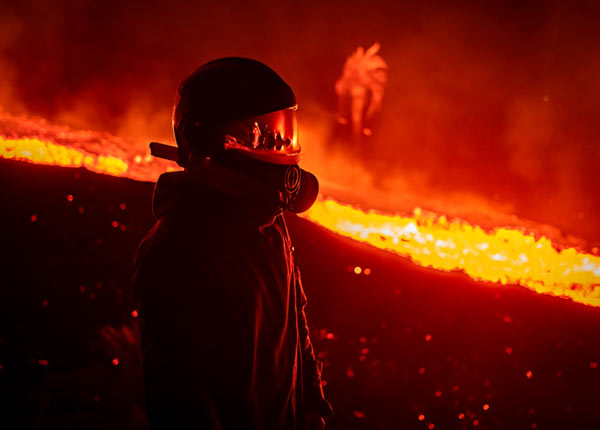Arturo Rodriguez
Throughout his 30-year career, he has received more than 30 awards and recognitions both nationally and internationally. However, his most remarkable achievement was being awarded two World Press Photo prizes in 2007 for his work on Africa-to-Europe migration. Later, he was named a Goodwill Ambassador of the UNESCO World Biosphere Reserve in his hometown.


In late 2020, he applied for a special grant from the National Geographic Society to cover the Covid-19 pandemic and its economic consequences in a region as vulnerable as the Canary Islands, where the economy depends mainly on tourism. He spent six months working hard to show how the crisis affected his region.
One week after submitting the project to NGS, Spain’s most destructive urban volcanic eruption began on his island, destroying more than 1300 houses and burying hundreds more under ashes. Around 7,000 people were evacuated from their homes, 350 hectares of farmland disappeared under the lava, and the largest tourist area, where half of the island’s hotels were located, remains uninhabitable due to toxic gases more than a year and a half later.
This has been his most successful work, which led him to the cover of National Geographic and, at the same time, the one that has affected him the most personally because it happened to his neighbours, friends, and family in his birthplace.
In 2022 in Novi Sad, Serbia, his images were part of the World Press Photo foundation’s “(Un)Settled” exhibition – Migration stories in the 21st century. His project “Empty Beaches” focused on the economic consequences of Covid-19 in the Canary Islands, financed by the National Geographic Society, and was exhibited in many places around the archipelago.
The Pulse of the Volcano was displayed in the seven islands for over two years, in Barcelona in 2023 and Olot in Catalonia. Currently, he is a contributor to National Geographic based in Mexico.
